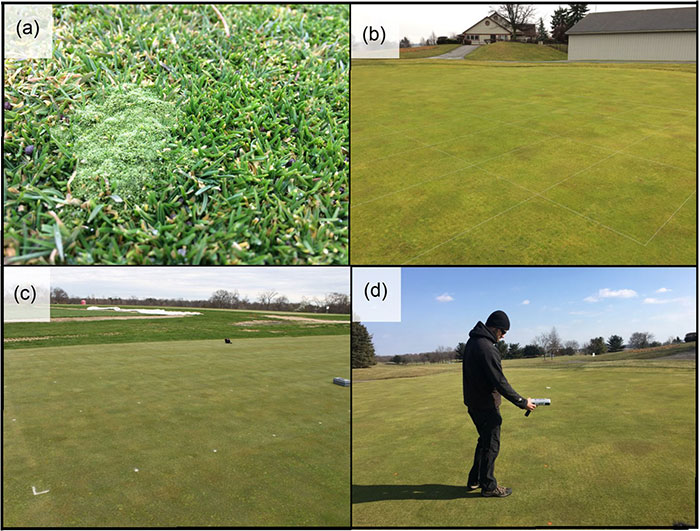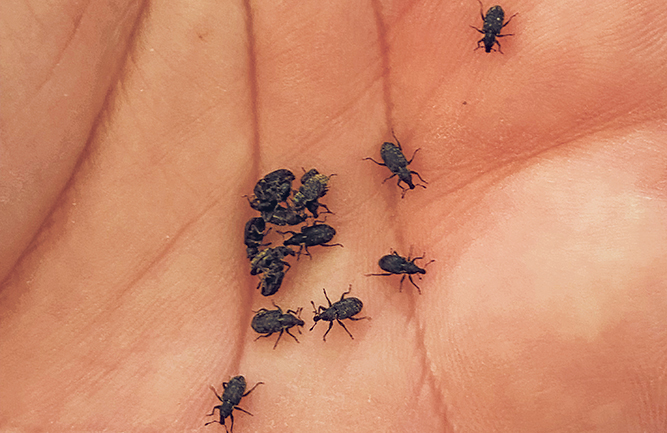Evaluating mid-winter applications of Quicksilver for silvery-thread moss

FIGURE 1: (a) Silvery-thread moss growing in nontreated control plot at Hawks Nest Golf Course in Creston, Ohio, at four weeks after treatment (WAT); (b) Experimental plot area at Hawks Nest Golf Course at trial initiation; (c) Experimental plot area at Rutgers Horticultural Farm 2 in New Brunswick, N.J., at 12 WAT; (d) Collecting normalized difference vegetation index values at Hawks Nest Golf Course at four WAT. (Photos: Zane Raudenbush, Ph.D.)
Researchers across six northern states evaluated the potential injury of mid-winter applications of carfentrazone-ethyl (Quicksilver, FMC) on putting greens. Silvery-thread moss grows when desirable grasses are dormant in the northern United States. They found that Quicksilver applied to dormant creeping bentgrass did not cause injury. However, it would be best if you avoided applications of Quicksilver as creeping bentgrass transitions out of dormancy.
Eradicating silvery-thread moss (Bryum argenteum Hedw.) from golf course putting greens is difficult due to limited chemical control options. Quicksilver is the most commonly used herbicide for selective suppression of silvery-thread moss in putting greens. The active ingredient, carfentrazone-ethyl, causes rapid injury of silvery-thread moss shoots; however, the damage is often temporary.
Research
In 2017, researchers experimented on creeping bentgrass research greens from January to June in Kansas, Nebraska, Indiana, Illinois, Ohio and New Jersey to assess the effects of standard rates of Quicksilver on creeping bentgrass following a winter application.
The five treatments were a nontreated control, 0.25, 0.5, 1 and 2 times application rates of carfentrazone-ethyl (where 1-time application rate = 6.7 fluid ounces Quicksilver per acre). The five treatments were applied once at each location in January or February using a CO2–powered backpack sprayer with a spray volume of 44 gallons per acre.
Researchers recorded normalized difference vegetation index (NDVI) measurements and percent creeping bentgrass injury at 0, 2, 4, 8 and 12 weeks after treatment (WAT). The research team obtained NDVI values using hand-held meters. The percentage creeping bentgrass injury was visually estimated using a 0 to 100 percent scale.
Results
Creeping bentgrass injury was only observed in Nebraska at 2 WAT because of significant winter injury. Neither treatment nor treatment times location effects were significant for NDVI or injury. The location effect was highly significant for NDVI, and values were, on average, lower in Nebraska than in other locations from 2 to 12 WAT.
The lack of treatment or treatment by location effects indicates the safety of labeled and above label (up to two times) applications of Quicksilver.












